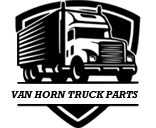
4 Tips for Checking if Your Draglink Needs Replacing
The draglink on your semi-trucks is responsible for providing controlled and stable maneuvering between your steering wheel and your tires. These components keep the vehicle and driver safe, especially when towing heavy shipments.
Like any part of your truck’s steering system, the draglink can experience wear over time. If you notice changes in performance, check if your draglink needs replacing by looking out for these signs of damage and addressing any issues before they escalate.
1. Identifying Common Causes of Wear and Tear
The lifespan of a draglink can vary depending on its typical routes and performance objectives. Over time, normal usage will inevitably cause wear on the draglink, but external elements can also accelerate this process. Understanding these factors will help you assess when the system requires a replacement.
Rough Terrains and Heavy Loads
Frequent exposure to rough terrain, heavy loads, and adverse weather conditions will wear down your system and tires. Off-road driving, for example, exerts additional strain on the steering system, which causes a faster breakdown of the component’s stability and performance. Drive only on paved roads, and avoid severe weather whenever possible to keep your vehicles operational.
Improper Maintenance
Without regular inspections and upkeep, dust, debris, and moisture can corrode the draglink and reduce its ability to function as intended. Poor lubrication of the component also speeds up its deterioration.
Persistent exposure to these conditions without intervention can lead to cracks, bends, or even failures in the draglink structure. Conduct routine maintenance to avoid further damage to the system.
Accidents and Impacts
Accidents or impacts involving the vehicle further escalate the problem, especially if the driver fails to notice the damage. Even minor collisions can misalign or damage the draglink and compromise the vehicle’s steering precision. If such incidents occur, always include the draglink in your post-incident inspection so that it remains intact and safe to use.
2. Recognizing and Assessing Signs of Damage

Early detection of draglink issues lowers repair costs and prevents extensive downtime. As you’re conducting maintenance, there are several key indicators that reveal when the draglink may need attention or replacement. Train your staff to identify any changes in performance to schedule repairs as necessary.
Difficulty Maintaining a Straight Driving Path
If the vehicle veers to one side or requires frequent corrections to stay on course, it often points to a misaligned draglink or excessive wear in the steering mechanism. Ignoring this issue risks further instability during driving, especially when navigating winding paths.
Loose or Unresponsive Steering
Drivers will experience a lack of vehicle control if operating a damaged draglink. The steering wheel may feel less connected to the vehicle’s wheels, making it difficult to handle during operation. This lack of responsiveness can compromise precision steering, particularly during sharp turns or emergency maneuvers.
Steering Wheel Play
Unusual play in the steering wheel may also develop when there’s excessive looseness or movement in the draglink. Such irregularities can become increasingly noticeable over time, especially if routine inspections fail to catch the gradual progression of damage.
Abnormal Noises
During transport, you may also hear abnormal noises like clunking or metal-on-metal grinding sounds, which can occur when parts of the draglink scrape against adjacent components. Regularly turning the steering wheel or navigating tight spaces might increase the noise. When you hear these sounds, schedule a maintenance visit with a professional to determine if your draglink needs replacing.
Visual Damage
Bent, cracked, or visibly corroded draglinks are indicators of wear that require immediate action. While you can repair some damage, most physical deformities require a complete replacement to uphold the integrity of the system.
3. Choosing the Right Component for Replacements
Once you successfully identify a problem with your draglink, selecting the right replacement will properly restore your semi-truck’s steering system. Choosing a compatible component and sourcing OEM or high-quality aftermarket parts guarantees that the vehicle performs optimally.
Verify the Specifications
Start by verifying the specifications of the draglink you need. Knowing your semi-truck’s make, model, and year will help you source compatible parts. Refer to the manufacturer’s recommendations, or reach out to experienced suppliers who specialize in semi-truck repair solutions to find this information.
Focus on Durability
As you browse your options for parts, focus on components constructed with robust materials that resist wear and can withstand the demands of heavy usage. High-quality draglinks will last longer and offer better long-term reliability than cheaper alternatives.
Work With Reputable Suppliers
Working with reputable suppliers who stand by their products reduces the risk of receiving substandard parts. Look through reviews, certifications, and customer testimonials to identify trusted vendors capable of delivering dependable components. Partnering with an experienced supplier also grants access to expert guidance during the purchase decision, so utilize their expertise when you need repairs.
Prioritize Warranty Coverage
Additionally, many top manufacturers provide warranty support for heavy-duty components like draglinks. This added assurance offsets replacement costs in case of unforeseen defects after installation.
4. Performing Ongoing Vehicle Maintenance

After replacing your system, preventive maintenance extends the lifespan of your semi-truck’s draglink and overall steering performance. By incorporating regular inspections into your maintenance schedule, you can detect potential problems before they evolve into major issues.
Lubricate the Draglink Regularly
Lubricating the draglink at regular intervals is a simple yet highly effective way to improve its efficiency and durability. Quality lubricants minimize friction between moving parts to reduce the risk of corrosion and damage. Always refer to your semi-truck’s maintenance manual for specific guidelines, and use high-quality grease designed for heavy-duty steering components for longevity and care.
Conduct Alignment Checks
Routine alignment checks identify any changes in your vehicle’s wheels and steering system synchronization. Misalignment puts extra strain on the draglink and may lead to accelerated wear and uneven handling of the semi-truck.
Monitor Tire Wear Patterns
Pay close attention to tire wear patterns during maintenance. Uneven or irregular tread wear often indicates underlying steering system imbalances, including potential draglink issues. These signs warrant immediate investigation of the suspension and steering components.
Use Modern Diagnostic Tools
Adopt a dynamic approach to fleet monitoring with modern diagnostic tools and sensors. These tools track real-time data on your vehicle’s steering system performance to offer predictive insights into potential draglink problems. This allows fleet managers to plan timely repairs and act proactively.
Whenever you need repairs on your vehicles, it’s always best to partner with a trusted professional for compatible and trusted maintenance parts. At Van Horn Truck Parts, we offer high-quality components that will keep your vehicles operational for years to come. If you’re looking for semi-truck steering parts, browse our collection on our website, or contact our team for support.

